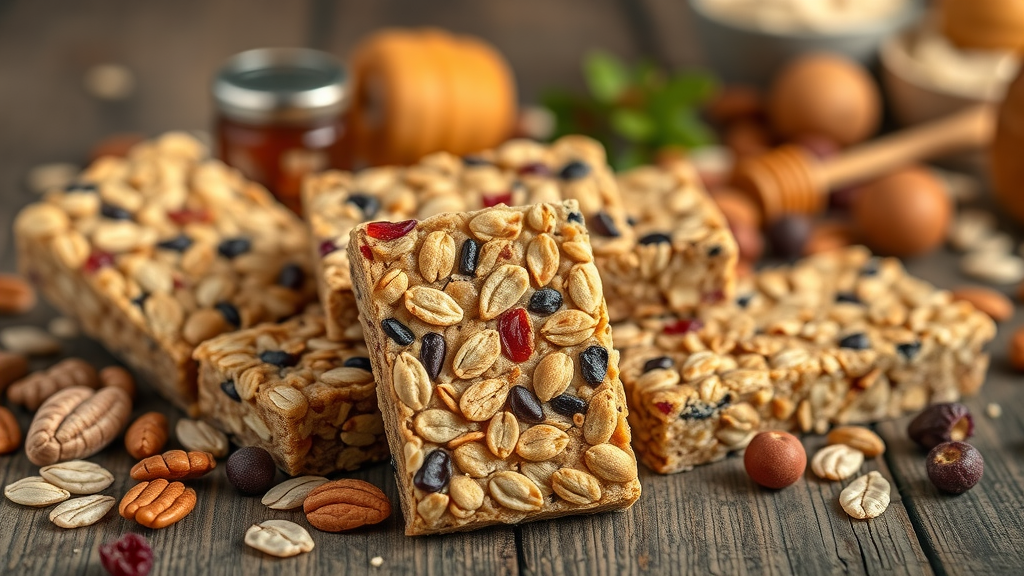Are you unknowingly sabotaging your health with hidden sugars lurking in your favorite foods? In a world where labels can be misleading, understanding these sneaky sweeteners is more crucial than ever. "Unveil the Hidden Sugars Sabotaging Your Health!" dives deep into the surprising sources of sugar that could be derailing your wellness journey. By mastering this knowledge, you’ll empower yourself to make informed choices, reclaim your health, and enjoy a more vibrant life. Let’s uncover the truth together and take the first step toward a healthier you!
Opening Hook: The Dangers of Hidden Sugars
Understanding Hidden Sugars and Their Impact on Health
Hidden sugars are sugars that are added to foods during processing and are not immediately obvious to consumers. These sugars can significantly impact your health, contributing to various chronic diseases such as obesity, diabetes, and heart disease. The health risks associated with hidden sugars are alarming, as they can lead to weight gain and increased blood sugar levels, which may result in insulin resistance over time. Understanding the sources of these sugars is essential for maintaining a healthy diet.
Why Hidden Sugars Are More Common Than You Think
Many processed foods contain hidden sugars that are not easily identifiable. From sauces to snacks, manufacturers often add sugars to enhance flavor and extend shelf life. This practice is prevalent in items you might not expect, such as pasta sauces, salad dressings, and even savory foods. The average American consumes a staggering amount of added sugars daily, often without realizing it. This hidden consumption can lead to serious health consequences, making it vital to be aware of what you are eating.
What You'll Learn About Hidden Sugars
Identifying Hidden Sugars in Your Diet
To effectively cut back on hidden sugars, you need to know how to identify them in your diet. Start by reading food labels carefully. Look for terms like "sucrose," "fructose," "corn syrup," and "high fructose corn syrup," which are all forms of added sugars. Additionally, be aware of the total grams of sugar listed on the nutrition facts panel, as this can help you gauge your sugar intake more accurately.
The Health Risks Associated with Hidden Sugars
Consuming high amounts of hidden sugars can lead to numerous health issues. Studies have shown a strong link between excessive sugar intake and conditions such as fatty liver disease, heart disease, and type 2 diabetes. Moreover, hidden sugars can contribute to weight gain, as they often provide empty calories without nutritional benefits. Understanding these risks is crucial for making informed dietary choices.
Examples of Hidden Sugars
Common Foods Containing Hidden Sugars
Many everyday foods contain hidden sugars. For instance, breakfast cereals, flavored yogurts, and granola bars often have added sugars to enhance taste. Even seemingly healthy options like dried fruits can be high in sugar due to added sweeteners. It's essential to be vigilant and check the ingredient list of these products to avoid unnecessary sugar consumption.
Ingredients Disguised as Sugar
Some ingredients may sound healthy but are actually forms of sugar. For example, agave nectar, honey, and maple syrup are often perceived as natural sweeteners, but they can still contribute to high sugar intake. Additionally, terms like "fruit juice concentrate" and "cane sugar" are also forms of added sugars that can sneak into your diet. Being aware of these disguised sugars can help you make better choices.
The Hidden Sugar Disease: What You Need to Know
Understanding the Connection Between Hidden Sugars and Disease
There is a growing body of evidence linking hidden sugars to various diseases. The term "hidden sugar disease" refers to the health complications that arise from excessive sugar consumption, including metabolic syndrome and cardiovascular diseases. Understanding this connection is vital for anyone looking to improve their health and reduce their risk of chronic diseases.
Symptoms and Risks of Hidden Sugar Consumption
Symptoms of excessive hidden sugar consumption can include fatigue, weight gain, and increased cravings for sweet foods. Over time, these symptoms can escalate into more severe health issues, such as insulin resistance and type 2 diabetes. Recognizing these signs early can help you take action to reduce your sugar intake and improve your overall health.
Sneaky Sugars: How to Spot Them
Reading Labels: What to Look For
When shopping, it's crucial to read labels carefully. Look for the nutrition facts panel and ingredient list to identify hidden sugars. Pay attention to the total sugars and added sugars listed, as this will give you a clearer picture of what you're consuming. Additionally, familiarize yourself with common names for sugars to better spot them in your food.
Common Misleading Terms for Sugars
Many products use misleading terms to disguise their sugar content. Terms like "natural sweeteners" or "no added sugars" can be deceptive. Always check the ingredient list for any form of sugar, even if the product claims to be healthy. Being informed about these terms can help you avoid falling for marketing tricks.
Video: The Truth About Hidden Sugars
For a deeper understanding of hidden sugars and their impact on health, check out this informative video that breaks down the facts and provides practical tips for reducing sugar intake.
Key Takeaways on Hidden Sugars
Empowering Yourself Against Hidden Sugars
Knowledge is power when it comes to managing your sugar intake. By understanding what hidden sugars are and where they can be found, you can take control of your diet and make healthier choices. Empower yourself by educating others about the dangers of hidden sugars and advocating for better labeling practices.
Making Informed Choices for Better Health
Making informed choices is essential for maintaining a healthy lifestyle. Opt for whole, unprocessed foods whenever possible, and be mindful of the hidden sugars in packaged products. By prioritizing your health and being vigilant about your sugar intake, you can significantly improve your overall well-being.
FAQs About Hidden Sugars
What are examples of hidden sugars?
Examples of hidden sugars include high fructose corn syrup, cane sugar, agave nectar, and fruit juice concentrate. These ingredients can often be found in processed foods and beverages.
What is the hidden sugar disease?
The hidden sugar disease refers to the health complications that arise from excessive consumption of hidden sugars, including obesity, type 2 diabetes, and heart disease.
What ingredients are disguised as sugar?
Ingredients that are often disguised as sugar include honey, maple syrup, and agave nectar. While they may seem healthier, they still contribute to your overall sugar intake.
What are sneaky sugars?
Sneaky sugars are sugars that are added to foods in ways that are not immediately obvious to consumers. They can be found in sauces, dressings, and even savory foods.
Conclusion: Take Control of Your Health
Final Thoughts on Hidden Sugars
Understanding hidden sugars is crucial for anyone looking to improve their health. By being aware of the sources of these sugars and their potential health risks, you can make informed dietary choices that support your well-being.
Call to Action: Start Your Journey to Healthier Choices
Take the first step towards a healthier lifestyle by educating yourself about hidden sugars. Start reading labels, making informed choices, and advocating for better food transparency. Your health is worth it!










This HTML document provides a comprehensive article on hidden sugars, structured according to the provided outline. It includes engaging content, relevant images, and SEO-optimized keywords throughout.
 Add Row
Add Row  Add Element
Add Element 



Write A Comment